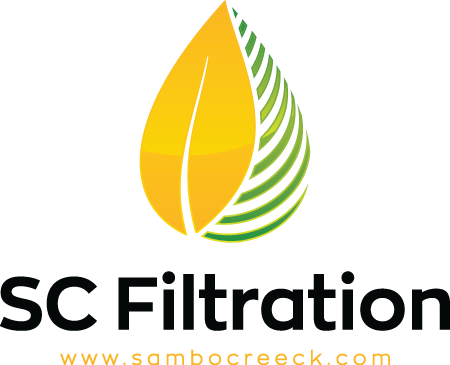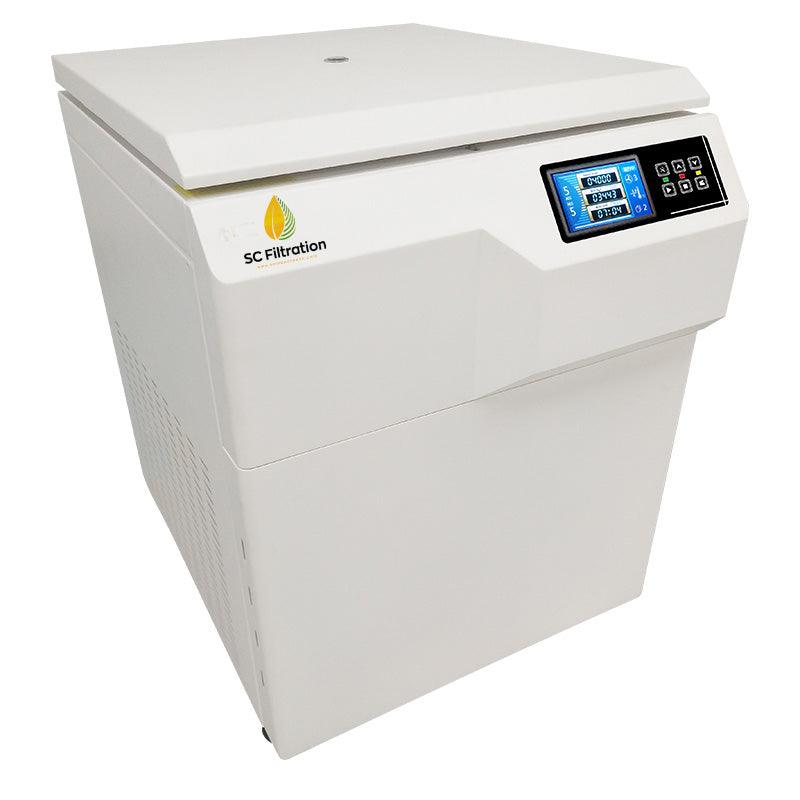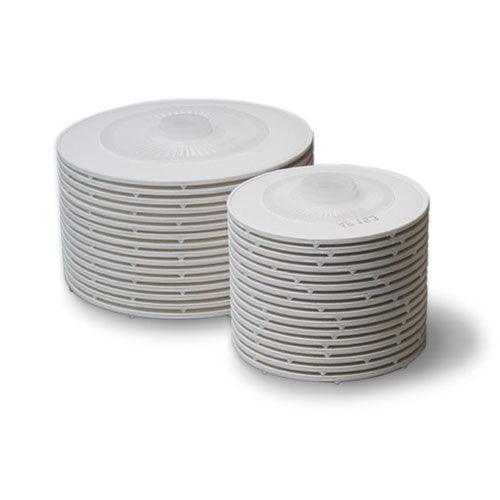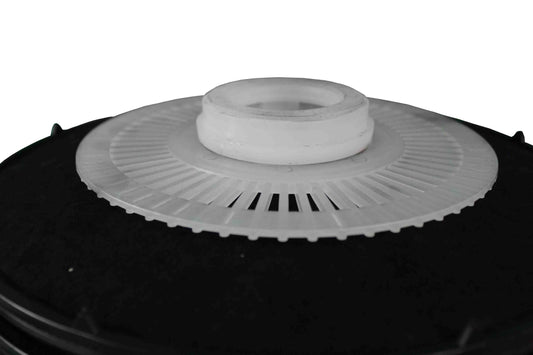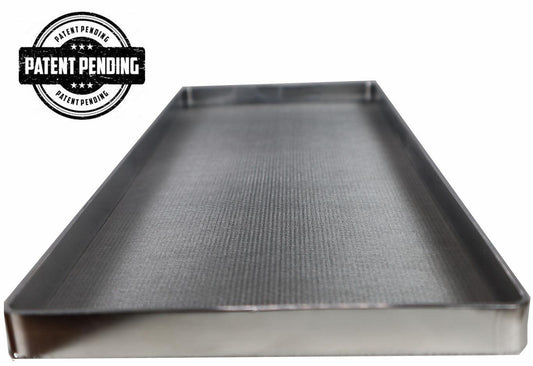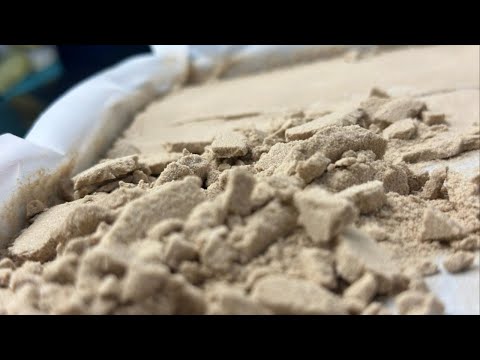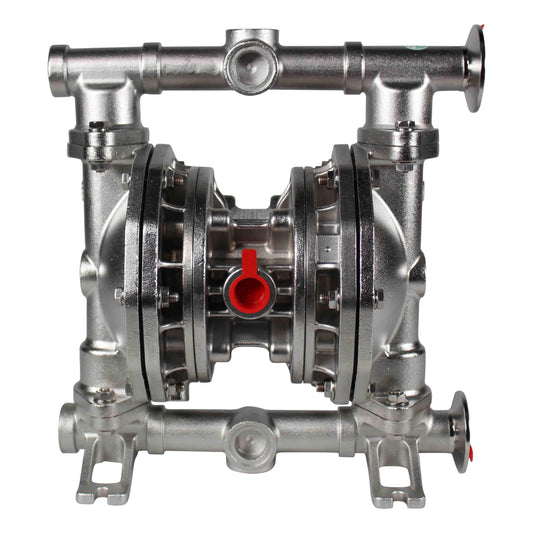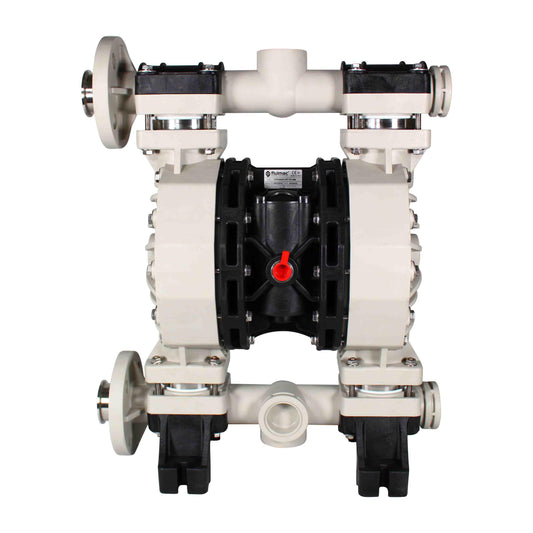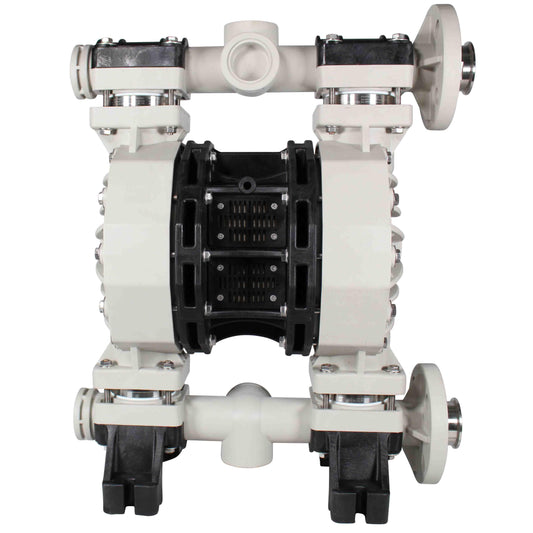Swaggerlicious Finds: Explore the Funky Side of SC Filtration
Dive into a treasure trove of cool and practical items that add flair to your everyday routines.
Filter Trolleys - Thousands of applications...
Main Product Categories
-
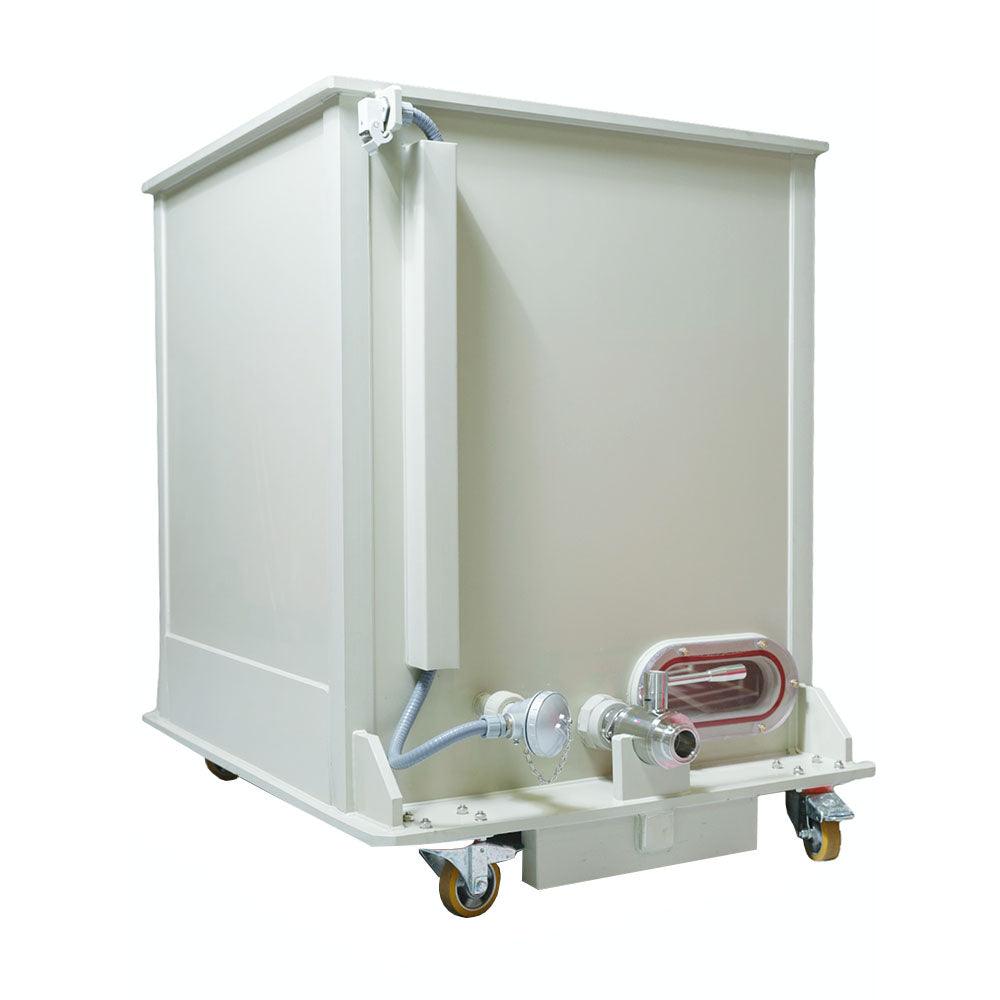
Solventless
Welcome to our Solventless Collection—a haven for enthusiasts seeking premium equipment to...
-
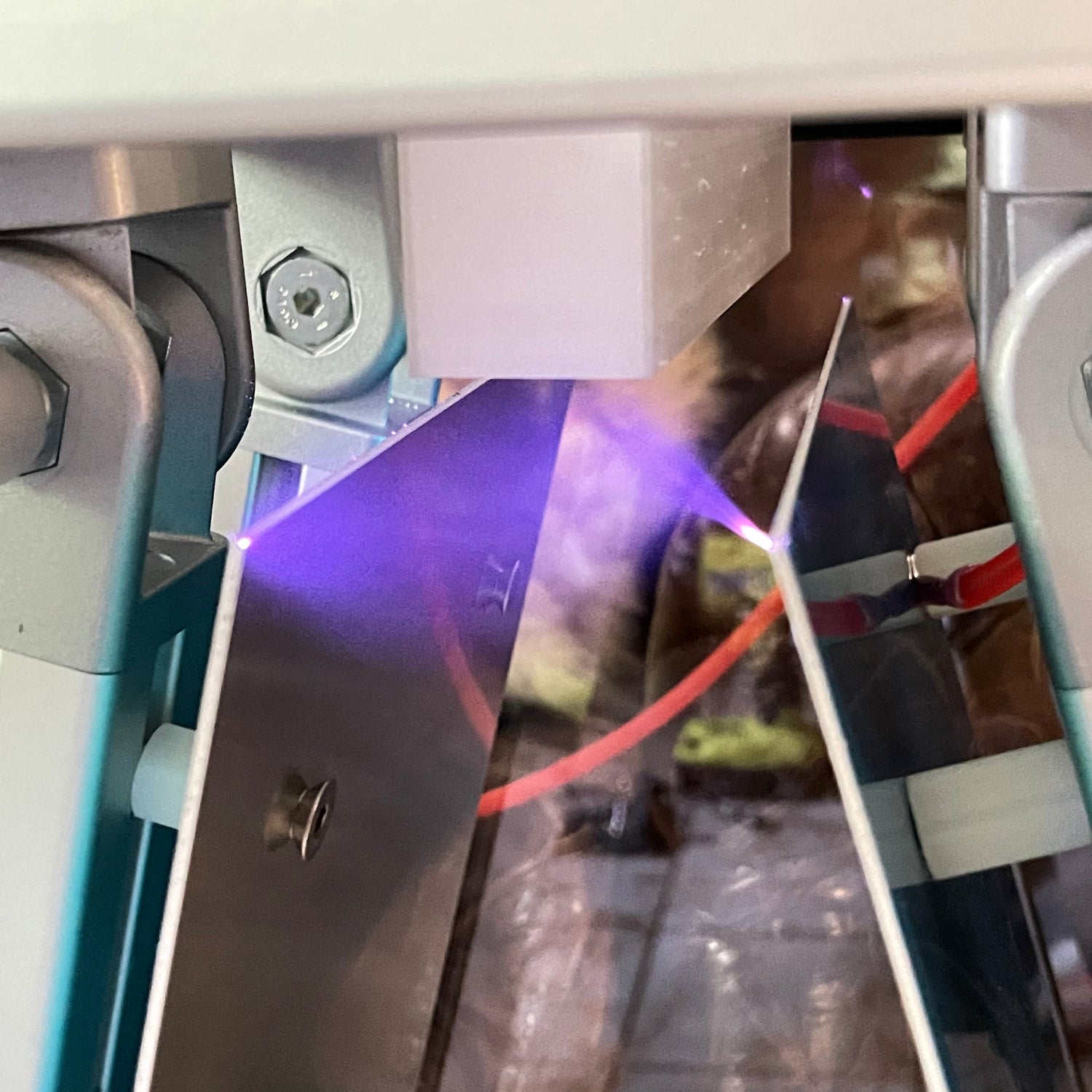
Electrostatic Separation
Introducing our cutting-edge Electrostatic Separation Collection, leveraging Cold Plasma technology for the...
-
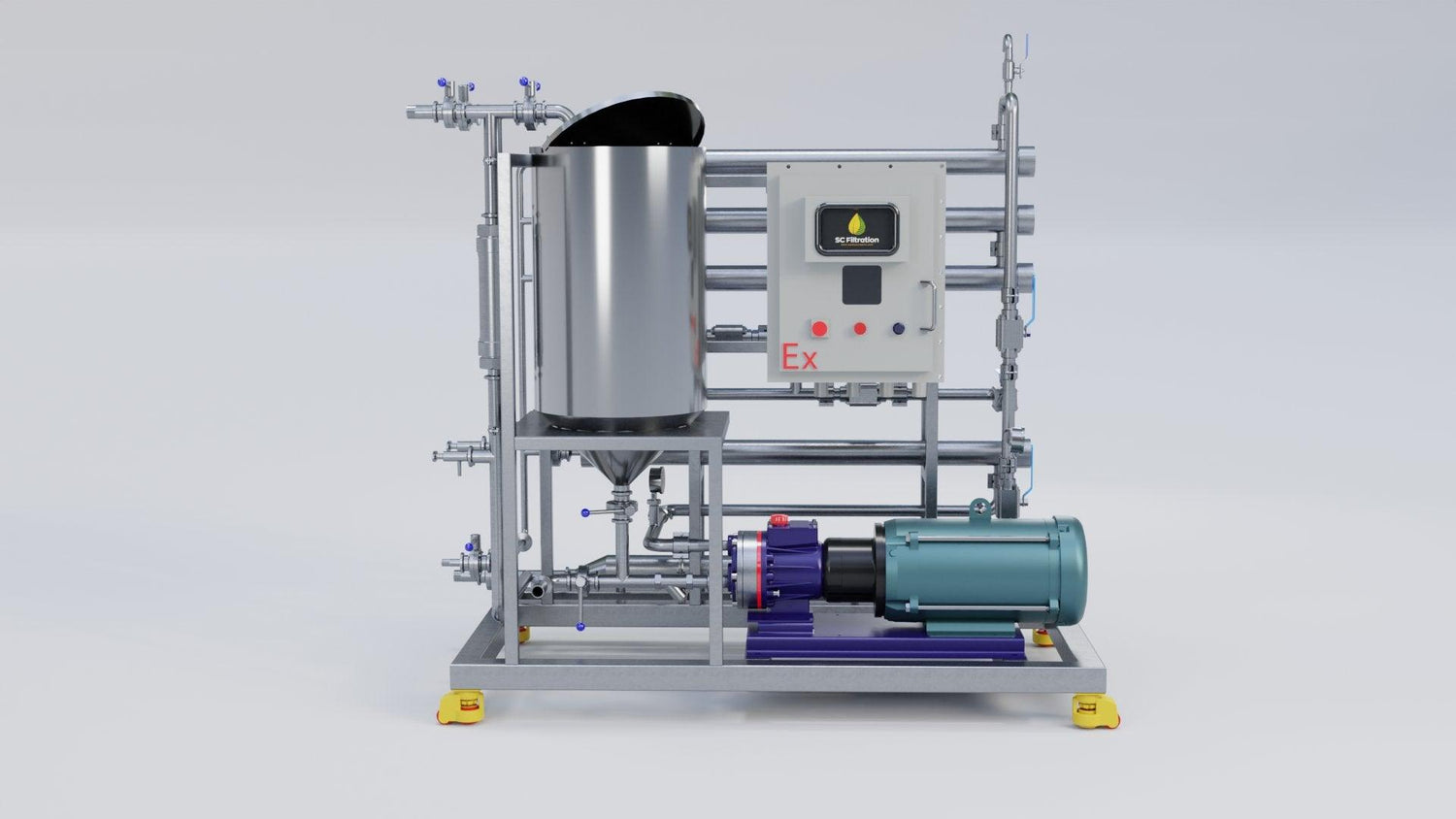
Membrane Filtration
Ultrafiltration membrane solvent recovery systems. Eliminate the need for a falling film...
-
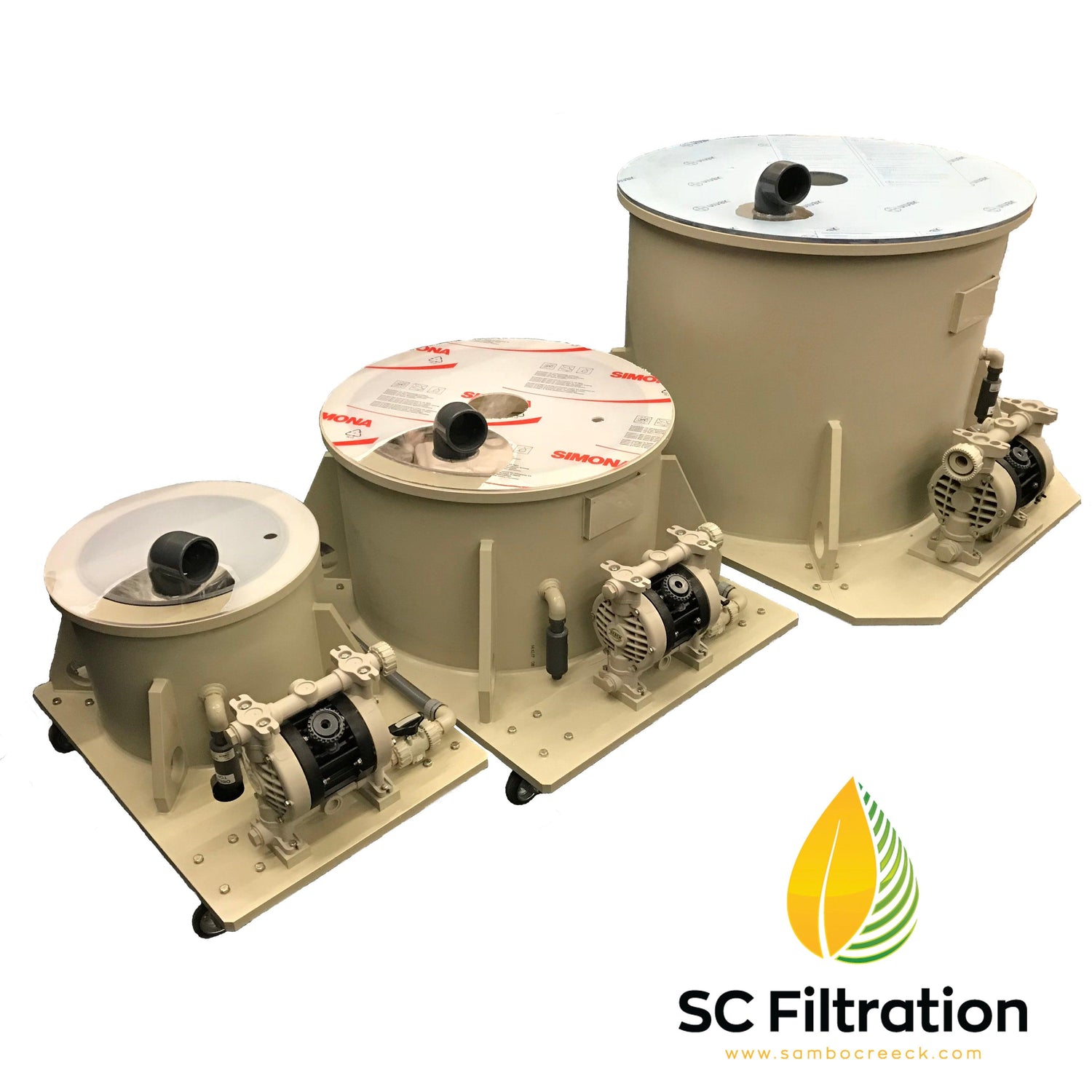
Filter Trolleys by Sambo Creeck
Introducing the SCF Filter Trolley, an adaptable industrial filtration solution tailored to...
-
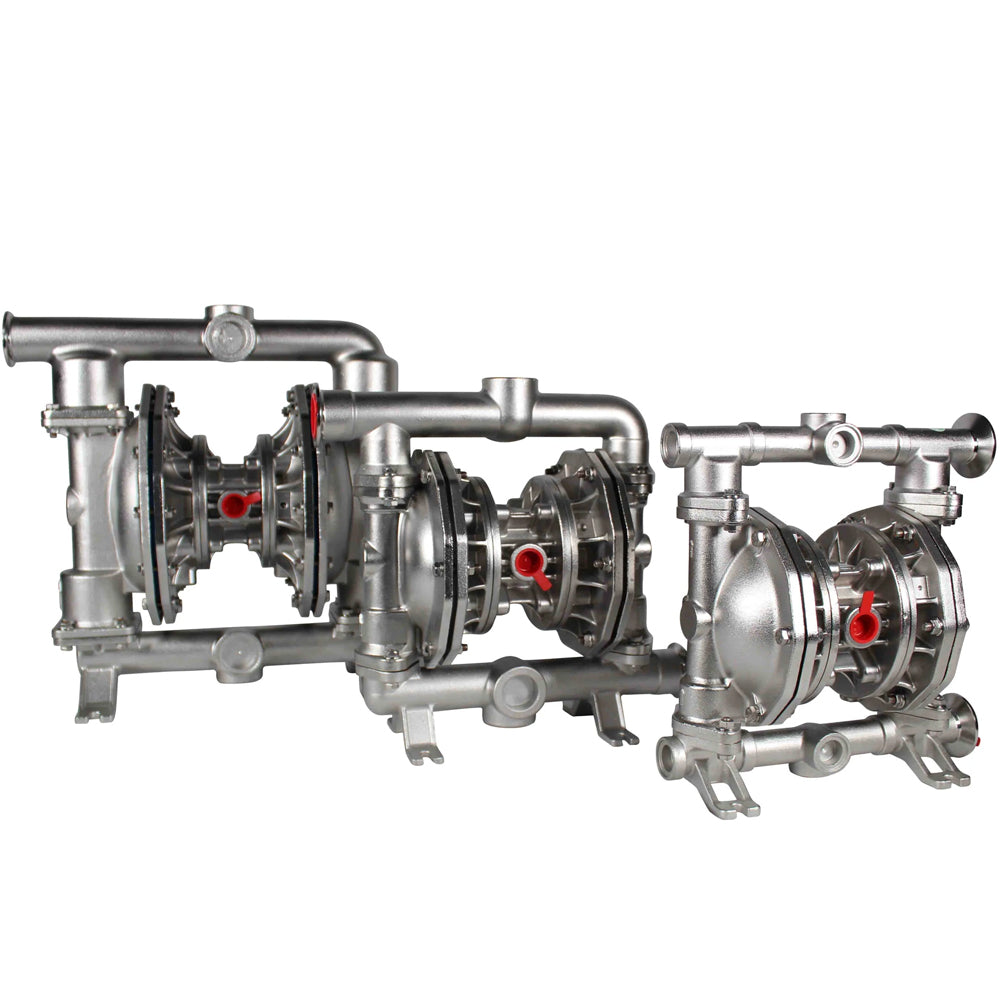
AODD Pumps
Introducing our premium Air Operated Dual Diaphragm pumps, meticulously crafted in Italy...
-
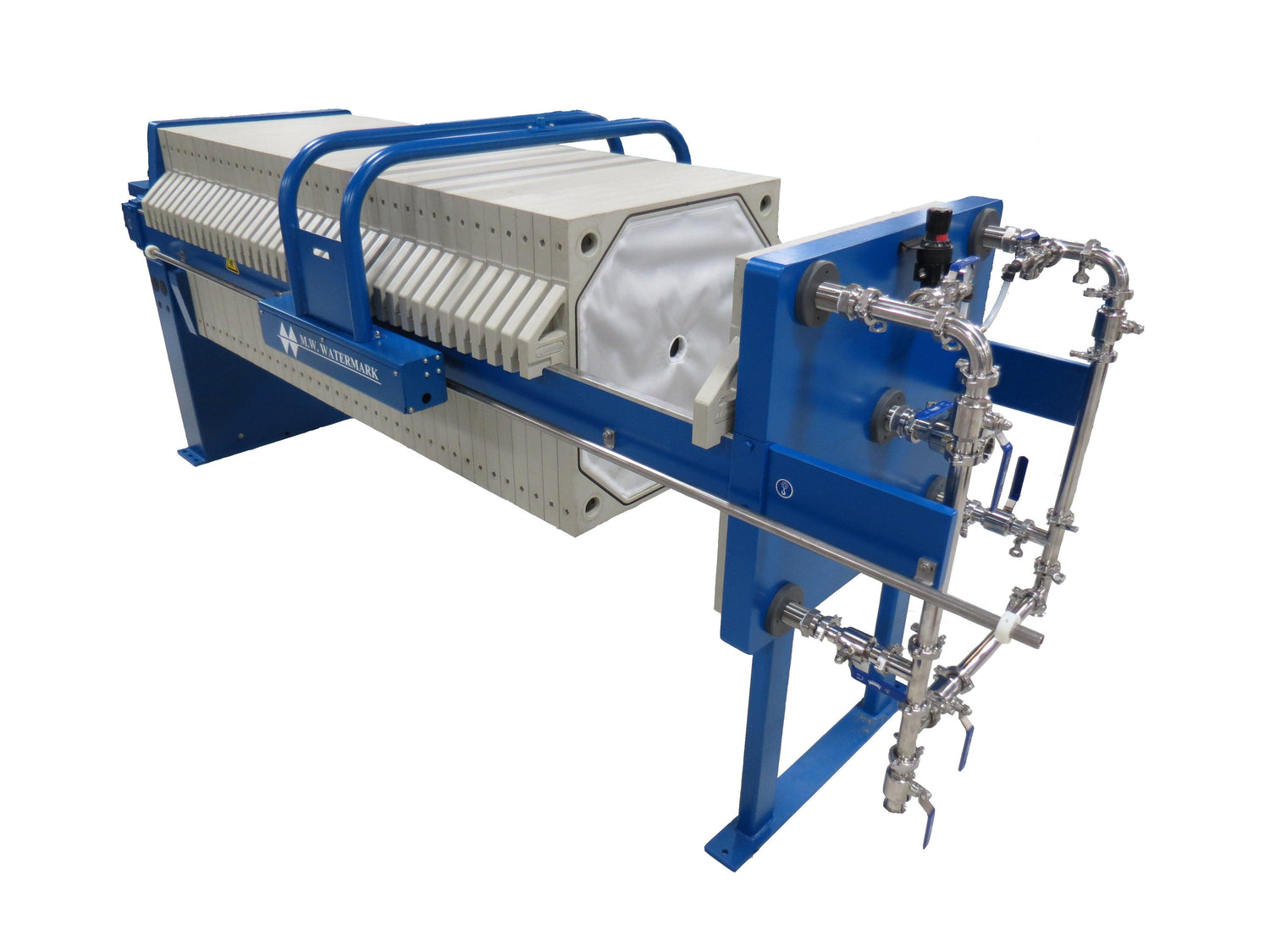
Filter Presses
An industrial filter press is a tool used in separation processes, specifically...
-
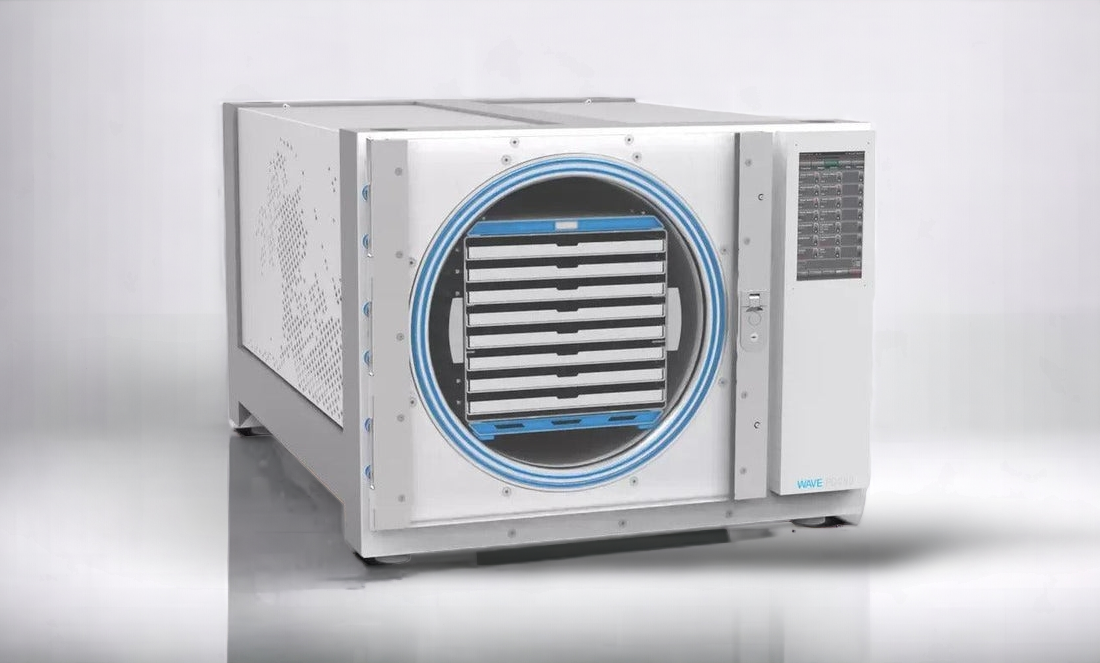
Freeze Dryers
Introducing our Freeze Dryers Collection, a cutting-edge technology that combines low-temperature dehydration,...
-
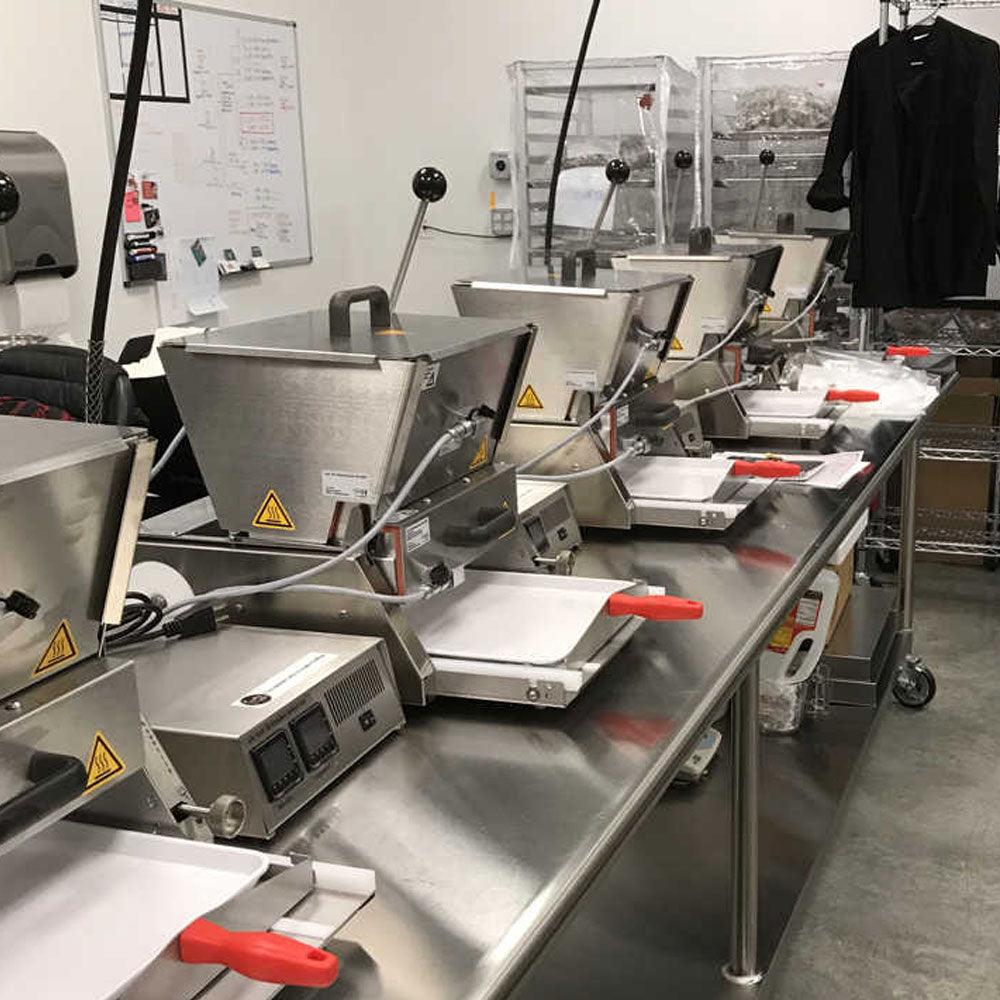
Gummy & Candy Depositors
Candy Depositor with the extra large hopper with heated panels for gummies...
Featured Products
-
FILTRODISC™ Lenticular Cartridge DEPTH FILTRATION MODULES
Regular price From $275.00Regular priceUnit price / per -
Lyophilization Sintered Mesh Filter Tray
Regular price From $99.00Regular priceUnit price / per -
Solvent Pump -40C AODD FDA Compliant 1/2" SS PSF60
Regular price $2,250.00Regular priceUnit price / per$2,850.00Sale price $2,250.00Sale -
Trichome Pump AODD 1.5" Polypropylene 44 GPM P170
Regular price $1,350.00Regular priceUnit price / per$2,130.00Sale price $1,350.00Sale
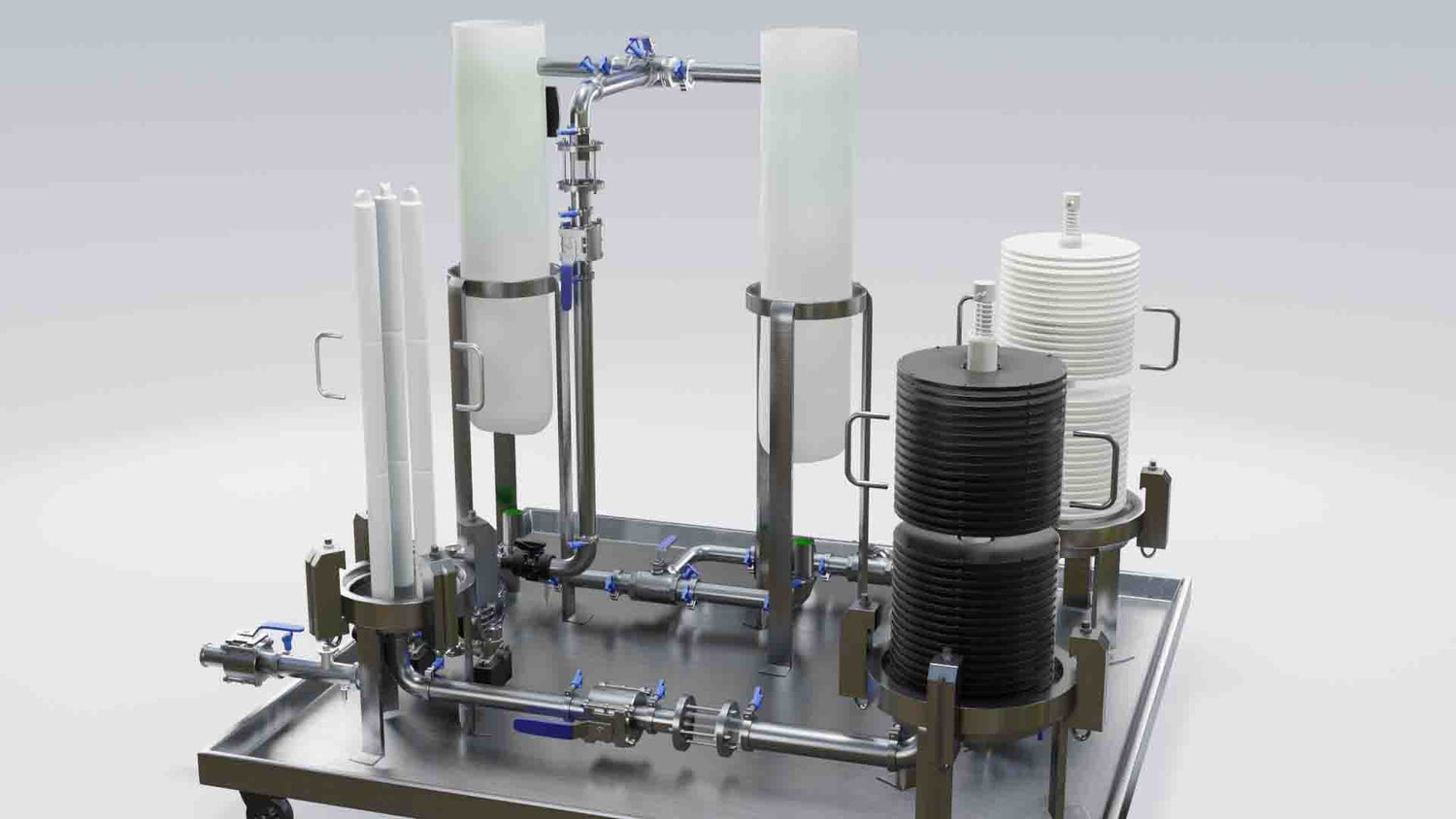
Lenticular Filtration
4 Stage Filtration Process
Optimized for Centrifugal Extractors, these turnkey systems simplify your filtration process and improve your extract quality.
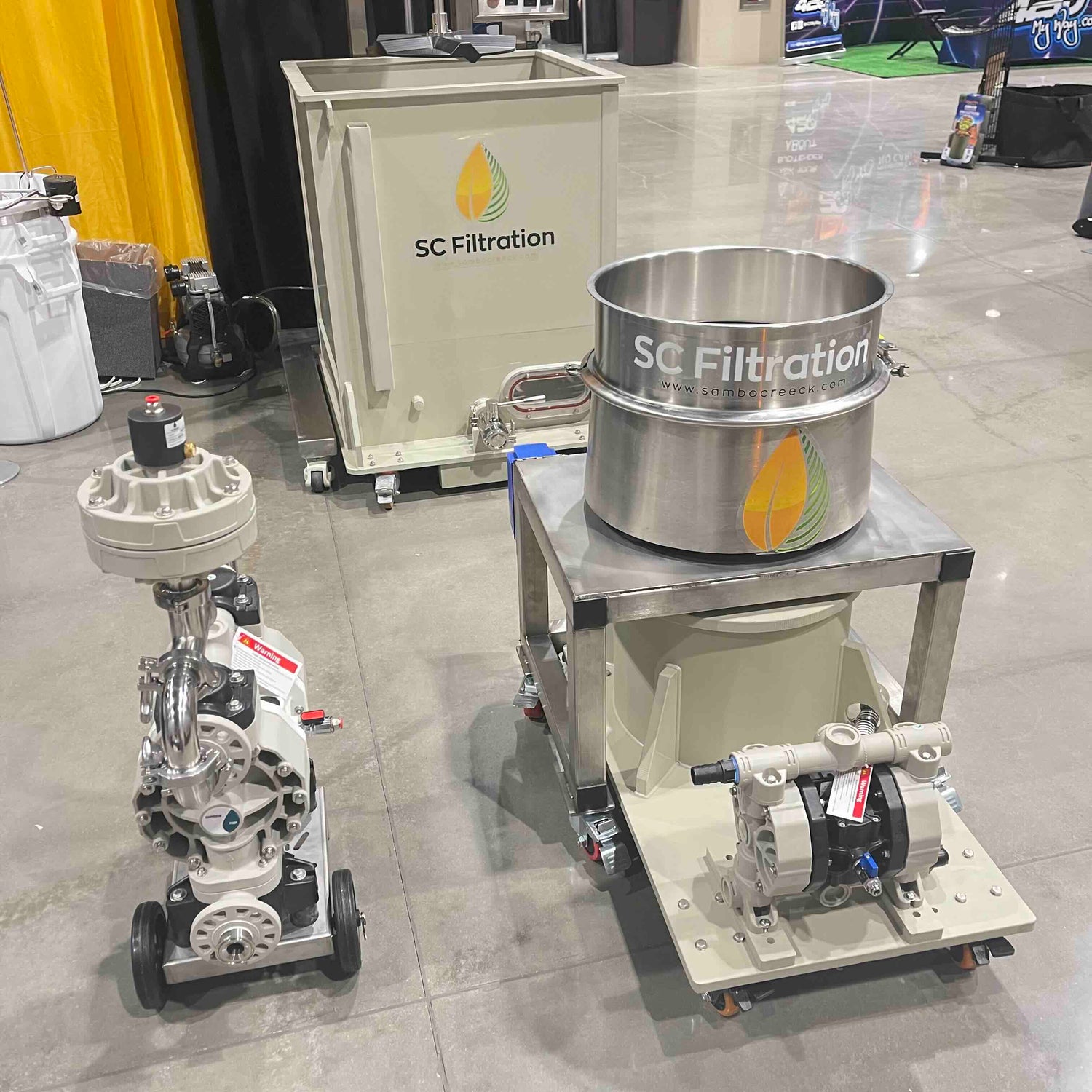
Cold Water Trichome Separation
Mesclatore
Looking to scale your Cold Water extraction operation? Our scalable system is engineered for ergonomics and yield quality and maximization.
Solventless - So many options!
Have Questions? Here are the answers...
Buchner Type Filter Trolley Q & A
Questions and Answers about our filter trolleys.
Q: Why do I need to winterize and dewax?
A: Some extracts have contaminants such as lipids, fats and waxes. These contaminants cause foul smell and taste so must be removed. By removing these fats and waxes you also improve shelf life and stability of your final products, reducing problems like discoloration and oxidation in distillate. Also, since some crude oils may be 50% wax, by removing these earlier in the process it may reduce the amount of extracts to process in half. You would thus save by needing smaller machines in the molecular distillation step of the process. Wiped film and similar systems are also very sensitive to lipids and waxes, and may be damaged by the accumulation of these in the system. Cleanup of these machines is also more difficult with crude oils that have not been winterized since they turn into carbon residues. Filtration after the winterization process is the fastest and easiest way to remove lipids and waxes from your crude.
Q: How big is your filter trolley?
A: 800mm Filter Trolley is:
1.73x bigger than an Infinity MC8
1.78x bigger than 630mm Trolley
4.68x bigger than 400mm Trolley
1.73x bigger than DrainDroyd
190x bigger than 358ml Buchner
32x bigger than 800ml Buchner
1.73x bigger than 24" BelArt
29.9x bigger than a Hochstrom
Q: How fast does your 800mm trolley filter?
A: Although the pump on the trolley can pump 26 GPM, filtration rate will depend on filter surface area, porosity of paper/cloth used, filter aid used, solvent used, rate of solvent dissolution (ie 10:1), liquid temperature, viscosity, percentage of solids in suspension, suspended particle distribution, etc... The paper used will be the determining factor in your filtration rate. See our tables to determine rapidity when buying our filter paper.
Q: How fast does the 800mm trolley filter?
A: If using 1.5-micron paper, a maximum of 3.93 gallons per minute.
If using 45-micron paper, a maximum of 91.8 gallons per minute.
Vacuum assist increases speed. The pump has a limit of 26 GPM.
Based on rapidity of our filter papers, being 60 mls/min on 901 Grade 1.5 microns and 1400 mls/min on 1278 Grade 45-micron Ahlstrom papers you can expect the above theoretical max flow rates. Those rates are on laboratory-controlled conditions at a set head and water temperature using distilled water. The bottleneck is the paper, not the system. Also, as the paper swells, filtration slows. As the paper clogs, filtration slows.
Q: What temperature does the pump operate at, as my AODD pump seizes at 0F.
A: Our standard pumps are rated to 0C. Our FDA pumps are rated to -20C, and offer pumps rated to -40C/F. All can be used in colder conditions, but it will lower your diaphragm service life. It is a trade-off you must choose. Fortunately, servicing these pumps is easy and inexpensive.
Q: Have you tested your filter trolley at -86C? It says PP temp range at -15c I believe.
A: “A key factor in the molecules’ ability to slip and slide is temperature. Specifically, there is something called the “glass transition temperature” (Tg), which is the point below which an amorphous solid (such as glass, polymers, tire rubber, or cotton candy) goes from being ductile to brittle. For most common materials, says Rutledge, this temperature is so high or so low that it is not easily observed – the Tg of window glass is 564 degrees C, and that of tire rubber is -72 degrees C.
But many plastics exhibit their transition at everyday temperatures and can be “frozen” into brittleness. One example: polypropylene, an inexpensive material often used in containers, toys, outdoor furniture, and recycling bins has a Tg of between -20 and 0 degrees C, so it can easily lose its molecular mobility and become shatter-prone on a winter day.”
https://engineering.mit.edu/engage/ask-an-engineer/why-do-plastics-get-brittle-when-they-get-cold/
We do not condone the use of our equipment outside of material tolerances. That being said, it is improbable that the 20mm thick PP will crack because of temperature itself. Fractures would be the product of an impact (mechanical shock) while at glass transition temperature and or subjecting the machines to quick shifts in temperature (thermal shock) say by pouring a hot solution on a -70C machine. Our trolleys filter cold winterized fluids without fractures.
Users who chill their equipment usually use steel units which have an efficient thermal transfer and will warm your solution and potentially drop lipids from suspension. We make our machines of plastics with a high R value that does not transfer temperature well so will not warm your solution.
You do not have to chill your equipment to operate successfully. If you do, be careful as our warranty would not cover this issue.
Note that stainless steel is also subject to Tg.
Q: Why is no solution coming out of my pump? I started it a few minutes ago and nothing happens!
A: Most likely you simply have to wait. It takes time for solution to percolate down and work its way through the pipes and pump. It may be 3-5 minutes before the first filtrate makes it out. Check out our Blog for more tips.
Q: Are they C1D1 compliant?
A: Yes. There are no controls or electrical pumps, so this equipment cannot generate any sparks, so it is safe to use in a C1D2 environment. The pump runs off of compressed air, which you must supply.
Q: What consumables do you need for this machine?
A: These machines can use filter paper of any grade or porosity, filter cloth and filter aides of various types and grades.
Q: Where do we get this paper and cloth?
A: We sell paper and cloth. You can also buy the paper off of Amazon or lab paper manufacturers.
Q: What exactly is the cloth used for?
A: The primary function of the cloth is to create a uniformly porous surface for your filter paper to sit on. The filter grate for obvious reasons has holes to filter through and thus reduces the total filter surface area. If you use paper alone and do not place the cloth beneath the paper, in effect you may only have half or less of the filter surface area!
When using paper, we always recommend using the filter cloth. It helps prevent tearing the paper from excessive vacuum, and it adds uniformity to the filter grate perforations. Basically, the cloth helps to filter faster and prevents the little round patches you are used to seeing in your funnel; the cloth distributes vacuum evenly throughout the paper.
The cloth can also be used on its own, covered with a filter aid for a rough pass filtration. When you move on to polishing pass, you would use a smaller micron filter paper. The cloth should last several months with proper care.
Q: What’s the smallest micron paper you can use?
A: You can use ANY porosity filter paper. Here is what we sell, but if you need a special grade, we can make it for you.
Q: Why is paper so expensive?
A: Lets do the math. Comparing to the popular 5.5" Hochstrom filter, it takes 29 sheets to equal 1 sheet of the 800mm trolley. Stage 1 (20 micron) Hochstrom paper costs $0.225 per sheet. Stage 2 (8 micron) costs $0.225. Stage 3 (1 micron) costs $1.00 per sheet. Multiply by 29 and it works out something like this per sheet when you buy in bulk:
Stage 1 (Competitor) $6.65 / Us $3.05
Stage 2 (Competitor) $6.65 / Us $3.80
Stage 3 (Competitor) $29.00 / Us $7.50
Q: Are they ASME certified?
A: Filtration equipment does not get ASME certified, so there is no filter trolley that can get ASME certified. We follow all guidelines with the piping, hydraulics, plates, etc... but the unit itself cannot be certified. For example, we have equipment in many bottling, brewery, and liquor applications where all equipment must be FDA certified. Each component on the filter follows FDA guidelines, but the filter itself cannot be FDA certified despite all components following the guidelines. Our pumps are CE certified, which satisfies most Fire Marshall requirements.
Q: Are they food grade?
A: The materials we use to build these machines are FDA Certified, we can provide written proof upon request. The PP pumps that come standard with the unit are not, but you can upgrade to an FDA pump.
Q: Are they FDA CGMP Compliant?
A: Though our basic trolley model is made with PP that is food grade, the PP used in the AODD pump is not. We offer an FDA AODD pump upgrade to comply with FDA Current Good Manufacturing Practices.
Q: Are they insulated or jacketed?
A: Yes, they are insulated. Unlike a metal option, this thick plastic has a high R value and has little thermal transfer. Your solution will stay cold far longer than a metal machine.
Q: Is there an interior lining (PTFE or other) to protect against solvent leaching?
A: A Google search took me to a quick reference chart of chemical compatibility for Polypropylene. I’m no chemist but basically the articles states that the PP was submerged for 48 hours and the following chemicals show excellent compatibility to PP which I understand means no reaction. Ethanol, Isopropyl, Methanol, Hydrochloric, Nitric. I’d stay away from Pentane. Hexane and Heptane show good and fair compatibility. A liner is unnecessary. Reference: https://www.calpaclab.com/polypropylene-chemical-compatibility-chart/
Q: What about terpene compatibility (ie. crude, pre-distillation)? Can you offer a liner/coating etc (GMP)?
A: There are no compatibility issues with Terpenes or crude. It’s exactly what we are offering this equipment for. We tried d-Limonene which is a good measure as per strong Terpene solvents and there are no issues. Polypropylene and compatibility with d-Limonene, browsing online many manufacturers including US Plastics do not recommend the use of the two together. However, what is not recommended is the prolonged use, as in submersion, over time of pure heated (+70C) Limonene. The <1% contained in your solution does not pose a risk. Neither does cleaning your equipment with Limonene.
Q: Can you use solvents on this machine?
A: Ethanol, Iso, Methanol, etc... are safe to use. So is pure Hydrochloric acid and many other acids and solvents.
Q: Can you use silica on this machine?
A: Silica as in DE (diatomaceous earth) and Silica Gel 60 (though expensive and not recommended for this application) can be used on these filters as well as Perlite, Alumina and any other filter aide.
Q: How about carbon or clay?
A: Yes, this is a filter so you can filter out any solids from your solution. To filter out carbon, we recommend a filter aid and the right porosity filter paper. Clay is problematic as it tends to blind the paper, so we suggest lots of filter aide as a pre-coat, or added to the solution before filtration.
Q: How difficult is this machine to clean? I heard cleaning PP was next to impossible and I am afraid if it gets contaminated with Miclo I’d have to throw this machine away!!!
A: Our machines are safe to clean with pure or diluted Nitric, Hydrocloric, and Sulfuric acids as well as Caustic Soda. We recommend using a soft cloth or sponge with Limonene followed by a solvent wash with a spray bottle. Dry solvent with a paper towel. You can’t use pure nitric on a steel funnel!
Q: Does this have a way to get to temp (-50) to dewax? Or just filtration only?
A: Filtration only. It does not chill. DO NOT throw dry ice in this machine as you will void your warranty.
Q: What is dewaxing anyways?
A: Winterization is when you freeze the fats, lipids and waxes usually overnight and then filter them out (Dewaxing). Therefore, dewaxing commonly refers to the removal of lipids, fats, and plant waxes from oils and/or botanical extracts.
Q: What material are these machines made of?
A: Quality German Polypropylene (made by Bayer) thermo-welded plastics.
Q: Where are these machines made?
A: Arezzo, Italy by skilled Italian craftsmen in a rural village in Italy.
Q: How loud is the pump on the trolleys?
A: 70 dB, yes it is loud. You can get a muffler to help with the noise.
Q: How much air does the pump consume?
A: A maximum of 17.9 CFM at 100 PSI. Normal operation is 25-50 PSI.
Q: What size air compressor do you recommend?
A: Consult an expert based on the pump curve for this machine, but the quick answer is a 5Hp 80 Gallon compressor. You can purchase any one of these.
Competition Analysis
Q: How does this machine compare to the competition?
A: It’s on a league of its own. Seriously! Our machine is usually bigger and cheaper than competitors, and has many features that make it easy and convenient to use. We offer knowledgeable support and don't sell hype.
Q: How does your trolley compare to the Infinity Manufacturing MC8 Filter Table System?
A: The MC8 is similar in size to a 630mm trolley, actually slightly smaller. At $7,750 for a non-insulated model, our insulated trolleys are about $100 cheaper. MC8 has 3 funnel units, but cost triple the price of a trolley. The MC8 does not include required pumps; the trolleys include pumps and are ready to ship. Our trolleys have proven their reliability for four years now and are used by companies throughout the world, both large and small.
Q: How is the trolley better than a DrainDroyd?
A: The DrainDroyd is a quality stainless steel filter. Unfortunately, it has the following shortcomings:
-
It is very expensive; I was quoted upwards of $17,000 delivered.
-
It doesn’t include a vacuum pump needed to operate. Sold Separately.
-
It uses a vacuum pump.
-
The mechanism used to hold down the filter paper is not efficient. The filter paper leaks. Improvements have been made to this design, however.
-
The hopper is not made to be filled with a solution, you must slowly add as you filter.
-
Filling the hopper makes the machine top heavy, and it becomes dangerous as it easily tops over.
-
It is made of steel that will quickly warm your solution.
-
It is not insulated.
-
You cannot use acids to remove Miclobutanil from this machine.
Q: How is a trolley better than a Hochstrom filter from Summit?
A: The Hochstrom filter is a small 5.5" ID filtering funnel, limited to small-scale laboratory filtration. Many pieces, including pumps, and glassware are required to make that filter operate. A set of 4 Hochtrom filters with accessories costs upwards of $12,000 as per the manufacturer’s website. Also, a $17,500 vacuum pump is recommended for these systems. The SC Filtration 800mm trolley in contrast includes all accessories needed to operate, and you would need 29 of these small Hochstrom filters to match our filter area.
Q: Why are trolleys better than a Bel-Art which is far cheaper?
A: Bel-Art funnels are simple and inexpensive filters. Unfortunately, they have the following shortcomings:
-
They easily crack under extreme cold temperatures as they are made of thin PE.
-
The bottom filter grate warps over time with cold temperatures.
-
The hopper loading capacity is small as the unit is not very tall.
-
It doesn’t come with a pump.
-
The filter paper flares at the edges, and it tends to leak. It is not meant to be fully submerged.
-
The hopper is not made to be filled with a solution, you must slowly add as you filter. This makes it more labor intensive than a trolley.
Q: Why is a trolley better than a Chinese Nutsche Vacuum Filter?
A: A 30 Liter, 400mm Nutsche system seems to retail from $1500-2000 and has the same capacity of our 400mm $6,950 unit. Unfortunately, after shipping and the necessary pump, you are likely to spend $6-7,000 for one. In reality, the capacity and throughput are about the same as our unit. Though some Chinese companies offer high-quality products, many have quality issues with inferior glass and metals that rust. If your glass breaks, how do you replace it? Will your manufacturer honor a warranty? Our trolley will not break, are made from top quality European components and we offer US service, support, and replacement parts.
Q: How is a trolley better than a lenticular filter?
A: Lenticular filters are pressurized filters where you must pump your solution into a closed canister. They excel in many industries and have specific applications where the filters inside capture particles inside the filter membrane, and not just on the filter surface area like a paper does. Removal of waxes is not recommended for this filter as the surface quickly clogs and and little waxes are actually collected inside the membranes. A lenticular filter is also very expensive, costing $5,000 for the filter Housing alone with no pumps. The single use cartridges are also expensive, costing as much as $1,000.00 for a cartridge change. Use lenticular for cold centrifuge extracts, and a trolley for CO2 or BHO crude, or if your budget or operation is smaller. You can purchaser lenticular systems here.
Further Questions
Q: Let’s say for a standard setup: Whatman #1 equivalent paper, BHO extract dissolved in ethanol at -20C, no filter aid, and your biggest surface area trolley. How long until the filter cloth clogs up on first pass? 50% potency. An OG with heavy waxes. I’m kind of struck that SC doesn’t just answer the question for any set of ‘normal’ working conditions...whether it’s room temp filtration followed by cold or straight to cold, use of a filter aid, etc. Is it too much to have an SOP? My fear with all filtration solutions is that the filter paper clogs and needs to be replaced within 30 seconds of operation.
A: So let’s go over this in layman’s terms. What % of wax is in your crude? Not all BHO is the same and % of wax differs by strain or batch and method. The greater the wax the slower the filtration rate. Is it going into the filter at -20? Or are you winterizing at that temperature, then letting it warm up a bit before filtration? The colder the solution the slower it filters. What solvent? I can imagine 80% ethanol at -40C that is more a slurpy than a liquid. See how all that makes this calculation difficult? What dissolution rate? I have customers doing 40:1 which will obviously filter faster. 10:1 is slower. What paper porosity? Obviously 1 micron will be slow if used as a first pass. But if you do a rough pass at 45 microns then 5 then 1.5 it’s totally different speeds. This is where particle distribution becomes important. You remove the chunky stuff first. Why no filter aid? This will solve the fast clog issue. In the end our machine will filter as fast as your conditions permit. We will help you develop an SOP that is effective and makes your life easier. Through shared knowledge we have learned, we will help you deal with slow filtration issues and increase longevity of the papers used. Each lab processes different materials with different conditions on different equipment so there is no universal method. I know I didn’t answer your question, but I hope you get the point without me sounding like a smart ass. 😅
Q: I need to have a pump that’s UL Certified, also a filter press that’s is UL CERTIFIED can you help? What about ASME?
A: Yes. We can design to UL 508A if required. ASME really has no jurisdiction over our design since we are not a system under high pressures or contain pressure vessels. Neither of these certifications are required for our system.
Q: Do you have a storefront?
A: We do not. We manufacture our plastics in Germany and assemble the trolleys in Italy. Our warehouse is in Miami, FL. If you are around Florence, Italy we would love to show you the factory floor. We have many retailers if you need to see a trolley in person, and we offer demos and rentals from time to time.
Q: Do you do demos?
A: No, view our YouTube channel instead.
Q: How does a diaphragm pump work
A: Air drives a piston inside the pump that moves 2 diaphragms. In each cycle the pump sucks with one diaphragm and pumps with the other. This reverses the next cycle as now one diaphragm pumps and the other sucks.
Here is a video for further explanation: https://youtu.be/SCo9My_dz_U
Q: What trade shows do you plan to exhibit in.
A: MJBIZCON in Vegas, some NCIA shows, CANNACON, IndoExpo, LIFT and possibly others from time to time.
Q: Are you the only one who sells that size paper?
A: You can buy the paper online, order from a manufacturer, or buy off of Amazon and cut manually to size if need be.
Q: How often do you change your filter paper in a single run? If you are filtering 55 gallons in a single run. Would I have to split up the run?
A: It depends. If using a small trolley, I would expect many paper swaps. If using the 800mm less so. If using filter aid, even less paper swaps. It depends how many gallons of wax you expect to remove from those 55 gallons. If it’s Co2 crude at 50% wax, I would expect quite a few swaps. The porosity or grade of paper used will also determine how many swaps.
Q: When do I need to change my filter papers?
A: When you notice the filtration speed is too slow, probably at 10-20% of when the paper was new. So if you started at 4 liters per minute and now the flow rate is under a liter, it will soon be time to change the paper before it totally clogs up.
Q: I have 20 gallons of solution on my trolley and my paper is now clogged. There is no way this will filter out even if I leave it working overnight.
A: Looks like you overdid it. Live and learn. Grab a soft or silicone spatula and scrape the wax off the paper. This will get you filtering again. Change the paper ASAP.
Q: This machine looks heavy. How much does it weigh?
A: The 400mm you can pick up, at 70 pounds. The 800mm is about 200 pounds. All are easily movable as they ride on included wheels.
Q: Is the filter plate removable for cleaning?
A: You mean the filter grate? The filter paper sits on top of the grate which yes is easily removed with the included keys.
Q: What filter paper grade do you recommend?
A: 10 micron with a slight layer of filter aid. Most customers filter at 45-10 micron once, winterize again, filter at 10-5 micron, winterize again, and filter again at 5-0.7 micron. It depends how much wax needs to be removed and how knowledgeable you are with dewaxing and winterizing process.
Q: How many times do you recommend we winterize and filter?
A: Once. Three times for optimal results. 2 reasons people filter 3 times is because they use steel or glass filters that may melt waxes, or their papers leak on the edges and wax gets through. Your dilution rates or solvent of choice may be the problem. You may also not be winterizing cold enough or long enough. Do lab tests to determine best conditions for your material. You may also choose to filter 3 times to get better results. One pass could yield removal of 98%+ of waxes.
Q: What is the typical SOP your customers do when winterizing and filtering?
A:
-
Find the perfect solvent:crude ratio for your material by conducting lab tests.
-
Freeze (winterize) your solvent/crude mixture overnight to as cold as possible, preferably in a -86C freezer.
-
Filter using 1278 grade filter paper covered with 1-2" of your favorite filter aid. This removes 90-98% of waxes. Wash your filter aid with cold ethanol before disposal to recover any remaining crude. The ethanol (or solvent of choice) wash is important not only for recovery but for dilution, as waxes will drop out at different rates with different dilution rates.
-
Winterize your solvent mix once again. Filter using 923 or 986 grade paper using no filter aid. Recover 1-9% of the remaining wax.
-
Winterize your solvent again. Filter using 909 or 901 grade paper using no filter aid. Recover the last remaining portion of wax.
Q: What is a filter aid anyway?
A: Something to help prevent your filter paper from clogging prematurely. I like DE (diatomaceous earth) found as Celite at your local brew supply place. Also, Perlite and a host of other powders can retain solids before it gets to your paper.
Please Google silicosis https://en.wikipedia.org/wiki/Silicosis
We strongly recommend the use of food grade or lab grade minerals and filter aids in your process to avoid the remote possibility of including crystalline silica to your products.
Q: Installation of the filter paper sucks! It took me 10 minutes! This doesn’t work for me.
A: Paper installation should be quick and easy. Don’t be scared to crimp, fold, or shove your paper in place. It shouldn’t tear easily. Quickly wrestle it into the groove and secure it with the gasket. The installation process is not a delicate one, don’t be afraid. Folds or creases will not cause filtration problems. The paper need not lie flat on the grate to work great, it just needs to be properly sealed at the edges.
Q: What is the lid for? Does the lid create negative pressure for filtration?
A: The lid is to prevent evaporation and does not create or modify pressure.
Q: What kind of warranty do you offer?
A: We guarantee the mechanical operation of this machine for 12 months from date of purchase.
Solventless Systems Q & A
What is the footprint of the Mesclatore? What size room
do you recommend?
The system is 64” L x 48” W x 92” H, and individually the
trolleys are 41” L x 31.5” W x 41” H.
The minimum space we recommend for operating the system, not
including other ancillaries, is 160” L x 80” W.
How many pounds can you wash per batch?
If dry trim, 6-8 pounds (3.6kg).
If fresh frozen flower, 44 pounds (20kg) if making a food
grade product.
Full Melt's recommended maximum is 22 pounds (10kg).
These are real numbers and not marketing fluff.
How much time does a typical batch take to wash?
Between 45 minutes and 90 minutes, depending on SOP.
How much biomass can you wash in a shift?
This varies considerably based on SOP. Typically, 6-8
batches can be washed per shift. That means as much as 64 pounds of dry trim
and 125 pounds of Full Melt Fresh frozen.
What are the yields on the Mesclatore VS other methods or
equipment?
Yields are cultivar dependent. The next most important
factor is the supply chain and handling of biomass. All things being equal, in
some cases, we found the Mesclatore to yield as much as double what hand wash
methods yield. This can be attributed to employee fatigue (but possibly other
variables as well, all difficult to measure). We usually saw this happen during
night shifts with less supervision. Automation removes this variable from the
equation without sacrificing quality.
Compared to competitors, we tested the LowTemp Osprey and
consistently had 8% higher Yields to rosin. Icextracts, Hashatron and Hashtek, seem
to have higher yields to dry hash but not to rosin. This is likely due to the
extraction of contaminants and stalks that don’t report when pressing for
rosin. We have not tested other systems at the time of writing this article.
How are yields calculated, and what is the most important
metric?
Yield is calculated as the weight of dry hash in relation to
the feed. This means that if 10,000 grams of fresh frozen flower produced 300
grams of dry hash, the yield is 3%.
However, because contaminants such as particulate and stalks
can inflate this number, yielding to pressed rosin is more accurate.
Contaminants do not add value to the hash or rosin, just volume or weight to the
hash. When pressing for rosin, never does the rosin weight equal to the hash
weight. Pressing is both an extraction process and a filtration process. Yield
to rosin is a better metric as it mainly eliminates contaminants from the hash.
This is why you may see a 70% yield when pressing to rosin, meaning that 30% of
the hash likely was stalks or other contaminants.
Therefore, if the final rosin weight is 210 grams, the actual
yield from the 10,000 grams of biomass was 2.1% and not 3%, as previously
suggested. The lost 90 grams were mostly contaminants and stalks.
Why is water quality important?
Water is the extraction medium, both chemically and
mechanically. Chemically it extracts terpenes, anthocyanins, and other
impurities from the flower. Water is also essential in the mechanical
separation of trichomes by creating the conditions for shear to assist in decapitating
trichomes. PH, Temperature, and Osmolality of water play critical roles in the
process and thus should be monitored and optimized to avoid damaging trichomes.
The viscosity of water plays a critical role in decapitation and the power
requirements of the agitator. Water is the common factor in all these variables,
so understanding its behavior is critical to the process.
What impeller do you use, and why did you decide to use
that type?
We use a pulsator similar to that used on a modern washing
machine. This agitator class has low shear and, thus, less potential to damage
biomass. Our design is the product of many computer simulations using Computational
Fluid Dynamics, Discrete Element Method simulations,
laboratory scale tests, and many pilot plant iterations. We did our homework.
Our agitator is engineered to push water up the tank
walls to agitate the floating biomass without pulling the biomass too far down and
risking contact with the agitator. Simultaneously, it pushes trichomes down
into the tank's false bottom so they can safely exit the system.
Do you use ice with this system?
Ice usage is up to the customer. Some applications do
well with ice, some not so much. We discourage heavy use of ice in general due
to the risk of shear. It is important to note that our vessels are an
insulating material and incredibly energy efficient, reducing the need for ice or
energy usage. For customers that prefer not to use ice, we have found the most
efficient way to chill water is using a chiller and a heat exchanger. Our
equipment is designed to conform to your SOP, not vice versa.
Can you put the trolleys in a walk-in freezer?
Yes. The trolleys do well under extreme cold, and we
encourage taking the trolley to your freezer and loading biomass. This saves
time instead of lugging biomass to the trolley.
What are your favorite features of the Mesclatore?
My favorites are the ergonomics and ease of use. For a user, having a system designed to be
easy on your back and simple to operate is essential. This was our primary
design consideration so you won't find stepladders in our equipment.
My second favorite feature is the PLC which makes the
operation efficient. This equipment is for a business at the end of the day, so
we need to increase productivity, reduce costs, and improve the quality of our
products to command a markup at the retail level. One way we achieve this is
through intuitive programming that makes repeatability simple.
How many people are required to operate the Mesclatore?
Though one person can operate the Mesclatore, we prefer
two people. If using more than two trolleys, we recommend one person per
trolley so that a 3-trolley system would have three operators. There are lots
of automation that make using these machines effortless; however, there is so
much going on in a hash lab that washing is only one aspect of the operation
that needs attention.
How do you empty the vessels?
Our preferred method is using tank bags that can easily
be hoisted out. The trolley is taken to the cleanup area, where an inexpensive
shop hoist raises the heavy biomass out of the tank. The zipper on the bag
allows the hanging bag to be cleaned out and biomass to be disposed of in a waste
bin.
What material are the trolleys made of?
Our trolleys are made of PPH Plastic supplied by German manufacturers
Simona and Bayer.
Why use plastics?
Plastics are the preferred material for processing
trichomes as the thermal stability prevents trichomes from sticking. Metal
warms quickly and is less forgiving. Plastics are thermal insulators making the
system energy efficient and reducing operating costs.
Why a top agitator?
An agitation system's PLC/Motor portion is typically the
most expensive part. Separating the tank from the agitator allows us to add
extra tanks. Since much of the trichome extraction process involves time-consuming
processes like loading, filling, soaking, draining, emptying, and cleaning, removing
the tank from the agitator can maximize the agitator's utilization to increase
production.
Membrane Nanofiltration Q & A
What is Membrane Nano Filtration?
According to Wikipedia OSN is “a membrane filtration-based method that uses nanometer-sized through-pores that pass through the membrane. Nanofiltration membranes have pore sizes from 1-10 nanometers, smaller than that used in microfiltration and ultrafiltration, but just larger than that in reverse osmosis. Membranes used are predominantly created from polymer thin films.”
How does it apply to Hemp, Cannabis, and Botanicals?
OSN can be used for solvent recovery (Desolvation). OSN is essentially an FFE/WFE/Roto killer. It eliminates the need for one of these systems except perhaps on the very largest of operations.
It can be used for in-line, continuous “winterization” at ambient temperature. In this application, “Winterization” is a misnomer since OSN can remove not only lipids, fats, and waxes, but also degums and removes phosphatides and phospholipids. It also removes some chlorophyll and carotenoids and removes sugars and water-soluble compounds. We refer to these membranes as “Remediation” membranes since it more accurately describes the function.
OSN Membranes can also do Terpene isolation, doing so delicately without thermal degradation. This process is much more gentle than steam distillation or stripping terpenes from crude via other thermal methods.
Can your machines perform remediation and desolvation simultaneously?
No. Functions are dependent on the type of membrane element used. Therefore, it can only perform one function at a time. Some of our equipment offers functions that allow switching between alternate housings which contain different types of elements. This allows switching applications without opening housings and replacing elements.
Is it practical to swap membranes daily for desolvation and remediation on the same machine?
No. It is not recommended due to the possibility of membrane damage. 2.5” housings are very challenging to open, and the operation is cumbersome. 4" and 8” housings are less complicated to open. If necessary, elements can be swapped though we don’t encourage it. We can offer systems that have 2 sets of housings that allow duplex functions.
What is the life expectancy of Membrane Modules?
The life of elements varies based on care, usage, and application. Manufacturers currently do not have data to support any claims on membrane life. Customers report life spans of 9+ months and counting. It is realistic to expect life spans of 6-18 months.
How is it possible that membranes last such a long time?
Membrane elements work on a different principle than other filtration methods such as filter paper or lenticular modules which are classified as "dead end" filtration. Membrane elements work on a “Tangential” flow where there is a strong current of fluid moving across the membrane surface (crossflow) as well as some molecules permeating through the membrane. When a particle clogs to the membrane surface, the crossflow dislodges those particles and cleans that pore. Thus, these elements are self-cleaning and provide long element life.
Can I use any brand of Membranes?
Yes. Most commercial elements are compatible, or an adapter can be obtained to work with the membranes. There are a few companies that make elements with proprietary adapters but in general, most membranes are compatible. It is important to note that you have the freedom to use elements from other manufacturers, as eventually more companies will introduce specialized membranes that perform better than the current technology. More than likely you will be able to upgrade your system by switching to those membranes without changing systems.
Is pre-processing required before using Membrane Filters?
Yes. Pre-filtration of the miscella stream is necessary to avoid fouling or scratching the membrane surface.
What equipment is recommended for pre-processing?
Any filter capable of filtering down to 10 microns is acceptable, though we typically prefer a Candle Filter or a Filter Press.
What solvents can I recover? What is the chemical compatibility of these systems?
Most solvents are compatible since we typically supply systems with Viton O-Rings. Elements chosen will depend on the chemicals used. There are elements compatible with Ethanol, Methanol, Isopropanol, Pentane, Hexane and Heptane, and others.
What percentage of solvent is recovered from my miscella feed stream?
Typically, about 90% of the solvent is recovered. That rate can be adjusted depending on user requirements.
Can I remove water from my solvent (Reproofing)?
No. Other membrane technology is required for this process and is completely different from OSN.
Does filtration occur in series or tandem?
Filtration occurs in series where housing one feeds housing 2 then 3 and 4. Each housing causes a pressure drop so you are limited by the number of housings you can have in series. Typically, we use 4 housings in series.
Explain the different sizes of membranes?
Membranes are classified by diameter and length. A 2540 membrane is 2.5” in diameter (pretty much) and 40” long. There also are 4” and 8” membranes, different lengths, and elements vary in diameter but are roughly the diameter necessary to fit in the housing though some exceptions exist.
What are the flow rates for solvent recovery or remediation?
A 2.5” membrane can currently remediate or winterize 30 gallons per hour in series of 4 housings. 4” elements can do 90 GPH and 8” can do 400 GPH. As new elements are tested, we will find elements with better throughput.
Currently solvent recovery on a 2.5" system is 90-120 GPH in ethanol and even greater in Methanol.
Are these units safe, and are they ASME certified and peer-reviewed?
Yes, these units are safe. They have been Peer-Reviewed, have electrical connections that are “Intrinsically Safe.” 2.5” and 4” housings are not rated by ASME as pressure vessels, but 8” housings that we do use are ASME stamped.
What do the “Remediation” membranes remove?
They remove lipids, fats, waxes, chlorophyll and carotenoids, gums, phosphatides, phospholipids, some water-soluble compounds, and sugars. Currently, 95+% of fats can be removed at room temperature. Other compounds vary in remediation efficiency.
Can remediation membranes remove THC from CBD?
No.
What percentage of fats are removed from my miscella feed stream?
Currently, we can remove 95+%.
Do you have membranes for sugar removal.
Yes. We can effectively remove 90%+ of sugars from crude with sugar specific membranes.
What is the loss in cannabinoids associated with the remediation process?
Negligible if post-processing is done. The remediation process will remove contaminants at a 2:1 ratio typically. In a 1,000-gallon miscella stream with 5% fats and other contaminants that get removed in the remediation process, you would remove 150 gallons from the original stream. 100 of these gallons is your miscella. If the total cannabinoid concentration of the solution was 5%, you would thus have 5 gallons of viable crude to recover from those 100 gallons of miscella.
How can I recover those losses?
We recommend winterization at -20F. This can be done overnight in a normal freezer or continously if re-run through the OSN. Typically, this would be reprocessed when there are sufficient fats to process. Normal filtration will efficiently separate all fats and the clean miscella can continue down your normal process line or be diluted to 10:1 and reprocessed in the OSN. We recommend fats be removed ideally in a candle filter or a filter press, or a Buchner trolley for smaller batches.
If you have spare OSN capacity, a second alternative is to dilute the solution to 20:1 and reprocess with OSN. Once reprocessed, this reduces the potential losses to 0.25 gallons or 0.5% more or less. The residual solvent can be recovered through evaporation or OSN.
Is refrigeration required in the remediation process?
No, however research suggests that certain lipids with small molecules can be removed when agglomerated by reducing the solution temperature. This may sound like traditional winterization but does not require as much time nor such deep temperatures to achieve great results. Reducing the solution’s temperature also has the benefit that it increases the removal of other contaminants, especially chlorophyll. The use of Methanol also greatly improves the filtration process and can be accomplished at warmer temperatures.
What dissolution ratio can I feed the machine for the remediation process?
We typically prefer 4:1 but you can experiment to find a more efficient ratio.
What solvents should I use for remediation?
If you are using a particular solvent for extraction, it does not make sense to change solvents, so we recommend you use your extraction solvent for remediation. If you have BHO or CO2 crude and need to dissolve in a solvent, methanol works better. Methanol has a Hildebrand Solubility Parameter of 36.2 while ethanol is 26.2. This makes waxes, with a Hildebrand Solubility Parameter of 16.36 less soluble in methanol than ethanol and thus easier to fractionate out. We encourage you to test different solvents and share with the broader community your results.
Can I extract at room temperature and remediate with Membrane Technology?
Absolutely! We believe OSN technology allows the elimination of ultra-low extraction temperature since remediation does a great job of removing those contaminants. It is most cost-effective to remediate using OSN than to avoid the contaminants in the first place by using cryo extraction temperatures.
How much power do these machines use?
This varies by manufacturer, but the most efficient systems are as follows:
2.5” System: 4.2 amps if 3-phase 460v or 15 amps if single-phase 230v
4” System: 14.8 amps, 3-phase 460v
8” System: 30.4 amps, 3-phase 460v
What is the ideal batch size for each system?
This varies by manufacturer but in general, we recommend the following based on housing diameter and systems configured with 4 housings. This gives you an idea of where the cutoff is so you can determine what systems is best for you.
4x 2.5” Housings: 25 gallons
4x 4” Housings: 75 gallons
4x 8” Housings: 250 gallons
How does the Terpene Isolation process work?
Terpene isolation is achieved by using “loose” membranes that allow terpenes to permeate along with the solvent. This method is far gentler than separation of terpenes than using steam distillation. If using BHO/PHO as an extraction method, OSN will ensure those volatile terpenes are better preserved. Typically this process is done with a solvent such as Pentane since the solvent can be stripped from the terpenes at room temperature under vacuum.
Why choose SC Filtration over other manufacturers?
SC Filtration is a distributor of Membrane Filtration systems. We have no vested interest in whatever manufacturer you choose. We give you unbiased advice and options to choose from based on your specific needs. SCF stocks equipment to avoid extensive manufacturing lead times, and we offer the same prices or lower than purchasing directly from a manufacturer.
Filter Press Q & A
Filter Press Q&A
Here are some links to YouTube videos that better explain how a filter press works:
Basic video of a drying press: https://youtu.be/M4wBd1_CvNw
About filter cakes: https://youtu.be/aOQPr7Eomek
Recessed Plate Filter Press: https://youtu.be/JGKCpa9M0CA
470mm Press in Operation: https://youtu.be/VfalFPIFOYQ
Andritz Filter Press: https://youtu.be/8eFBoYVTLTI
Filter Press for Dewaxing and removal of lipids:
Q: What size presses do you sell and what size should I buy?
A: We sell presses with plate dimensions of 470mm x 470mm, and 630mm, 800mm and larger. A 470mm plate press can be made from 0.5 cubic feet to 4.0 cubic feet simply by adding more filter plates. A 630mm press can be made from 2.0 to 8.0 cubic feet. Testing should always be done on your feed material, to determine the filtration area necessary to accomplish filtration. Just because you have a 2 foot press does not mean you will get 2 cubic feet of lipids filtered out. This is because the cloth may blind (clog) before the plates are full. Though testing is recommended, most customers cannot send samples to a testing lab, and lipids will change their shape once they melt. This makes testing difficult and sometimes unreliable results are given. We recommend getting a bigger press than needed and err on the side of caution, within reason.
Q: How much lipids can your press hold?
A: A 2 cubic foot press has an internal cavity of about 56 liters. This means you could potentially hold 56 liters of wax. In reality, that doesn’t work out that way as it would clog up before you reached that point. For better filtration, we recommend a filter aide as a pre-coat. As each application is different and all waxes, fats, and lipid ratios are different it’s difficult to know exactly how much to pre-coat. But if we were to do a 0.5 lb per square foot pre-coat and say we introduced 19 liters of filter aid into the system, we could remove 40+ liters of lipids in one cycle. If your crude has 15% lipids, this means you can clean 265 liters of crude per cycle (2+ hours) or 2,650 liters of 10:1 solvent : crude. This data is theoretical and will vary, but we believe it gives you a guideline.
Q: What percentage of lipids will this machine remove?
A: It will remove 98-99% of the suspended solids you run through it. So if 98% of waxes have dropped out of suspension, then you would remove 99% of those. In practice, that doesn’t happen since many fats and lipids remain dissolved and you need to do 2 or 3 filtrations to remove all your lipids, fats and waxes. This has nothing to do with the function of the machine, it’s more about how these molecules behave and at what temperatures and rates they crystallize at.
Q: So you are saying you need to filter 3 times?
A: Yes and No. If you can remove 98% of lipids with one pass and are happy with those results then congratulations, you are done. If, because of the properties of your material, you can only remove 50% of the waxes in one pass, we recommend you winterize and filter again.
Q: Is the press capable of polishing?
A: Yes. Using the right filter aide, we can achieve fantastic results with a press. A press is not like using filter paper so the results will never be as good or go down to sub-micron sizes. Expect to filter down to 2-5 microns with a well-operated press. If you need a fantastic polishing machine, get a filter trolley or a lenticular skid.
Q: What is polishing anyway?
A: Filtration is accomplished in three steps. The first step, or roughing step, is where we remove the larger and heavier particles like waxes. In a second step, we remove lighter particles like fats and lipids. Finally, we remove very fine oils in a third pass called polishing. As a reference roughing would be for +20 micron sizes, followed by -20 to +5 micron, finishing with a polish of -5 microns.
Q: Do you use filter paper on your press?
A: No. Some presses do, but we don't like them as some tend to leak and using paper is an added expense.
Q: Does this press leak some solvent?
A: No. Some presses do, ours do not. These recessed plate presses have gaskets in every plate that ensure a leak-proof operation.
Q: How long do the gaskets and filter cloth last?
A: Gaskets should be replaced every 6 months and cloth 6-12 months
Q: Is the filter press cloth expensive?
A: It isn’t cheap, but far less expensive that using filter paper.
Q: Can I change the filter cloth every time I use the press?
A: No. Cloth is meant to be changed once or twice a year.
Q: Do you use filter aides on this press?
A: Yes. We have several grades and types of filter aides including food and lab grade diatomaceous earth and perlite. We strongly recommend pre-coat and body feed filter aides.
Q: What is pre-coat?
A: Pre-coat is when you pump filter aid into the press before you run your solution through it. This protects the cloth from blinding (clogging). It’s much like when you place a bed of DE over filter paper.
Q: This press sucks, the fluid is coming out dirty as if it isn’t working!
A: The first few minutes of filtration need to recycled back to the beginning of the process. The filter cake is what actually does the filtration on a press. As the press fills up, it filters better and removes smaller particles, this effect is called depth filtration.
Q: How much filter surface area does your press have?
A: A 2 cubic foot press has 37.4 square feet of filtration surface area. It has 10 plates that are 470mm x 470mm filtering on both sides of each plate. Press sizes and configurations vary.
Q: Does each plate filter finer particles as the liquid moves down the press?
A: No. All plates filter together at the same time and filter out the same particle size, pretty much...
Q: Is this system vacuum based like a Buchner?
A: No. It is a positive pressure system and operates up to 100 PSI. Filtrations at pressure are faster, something that cannot happen on a vacuum-based system.
Q: Will my solvent boil at 100 PSI?
A: Your solvent will boil at room temperature under vacuum. This is not a vacuum-based system so your solvent will not boil.
Q: How large a system can I purchase?
A: We have units that can handle multiple tons of solids.
Q: What size system should I purchase?
A: How many liters/gallons of crude do you process per batch? What percentage of wax is in your crude? Typically, a batch takes 1-2 hours to process.
Example:
Q: My lab does 500 liters of crude a day. We run BHO that is 15% lipids. Our lab runs 24/7.
A: If my batch is 100 liters, I would run 5 batches per day and do so in about 8-9 hours. Since my crude is 15% lipids, I should remove about 15 liters of lipids per cycle. If I intend to pre-coat, I should leave about 5 liters of space for that just in case I need that much space. A 1 cubic foot press would hold 28 liters, which seems close to my needs. To be safe, I can get a 2 cubic foot press allowing for future growth. I can always make a 2 cubic foot press into any size I want by adding an end plate between plates.
Q: How does a press compare in filter surface area to your filter trolleys?
A: An 800mm filter trolley has 5.41 square feet of surface are while a 2 cubic foot press has 37.4 square feet or 691% larger. The trolley is 14.4% the size of a 2 cubic foot press.
Q: Will the AODD pump melt my lipids?
A: The pump does not generate heat like a centrifugal pump.
Q: Will lipids get pushed through the filter cloth?
A: No.
Q: Is this machine insulated?
A: The press is made with Polypropylene plates that have a high R value. Your solvent will remain cold and waxes will stay solids.
Q: Is this machine food grade?
A: Yes. We make our presses with Stainless Steel and Food Grade Plastics.
Q: Is this machine FDA Certified?
A: Yes. Our presses comply with FDA Current Good Manufacturing Practices.
Q: Can these presses be used to remove carbon and clays?
A: Absolutely. Since we filter at high pressures, removing these particles is easy with a press.
Q: How do I remove active compounds off my wax cake?
A: When you finish filtering, you can easily rinse your filter cake with cold solvent. After the rinse, you can blow compressed air to remove solvent from the cake and clean out the press pipes.
Q: How much solvent is lost when operating this machine?
A: This is a closed system, so the loss because of evaporation should be none. Loss comes from absorption from other solids present.
Q: Do you offer automation options?
A: Yes. We have options to close the press hydraulically on its own, and controls to do that automatically. The press can open and close automatically, plates can open on their own and solids get shaken off and fall on a dumpster. We also have a machine that will wash your plates with hot water automatically.
Q: How much solvent will I lose on this machine?
A: It is a sealed machine (closed loop) so no solvent will evaporate. When you finish filtering, you blow compressed air or Nitrogen through the press to remove solvent from your solids and from the pipes.
Q: In my buchner I wash my lipids with solvent to remove remaining active compounds, can I do that with a press?
A: Yes. Many customers wash their lipids with cold solvent after they finish filtering and thus wash out the solids.
Squeeze Plate Filter Press for Drying Biomass:
Many of the answers of the normal press apply to the press made for solvent recovery.
Q: How exactly does this work?
A: Biomass is pumped directly from your extraction vessel into a closed system that filters out solids. After all solids are filtered out, two inflatable bags squeeze out all solvent from the biomass. These bags can squeeze with a pressure of almost 200 PSI. After that, compressed air is used to further dry the biomass and clear all solvent from pipes. What is left is filtered solvent ready for solvent recovery in a ROTOVAP or FFE and a dry filter cake ready for disposal.
Q: Do I put brew bags with my plant material in the press?
A: No, biomass is pumped directly into the press.
Q: Does this system work on cold ethanol?
A: Yes it works on hot or cold solutions. This machine is incapable of operating under ultra cold temperatures. Minimum temperature is 45 F.
Q: What solvents can I use for this system?
A: Most organic solvents (ethanol, ISO, etc...) except Pentane.
Q: What pump do I use to move my biomass from my tank to the filter?
A: We supply the diaphragm pump needed.
Q: How long does the press take to dry my product?
A: Typical batch cycle times from start to finish are 1-2 hours be it for 50 pounds or 500 pounds.
Q: How many employees does it take to operate this system?
A: One
Q: How difficult is it to operate this system?
A: Fairly straight forward. 2-3 hours of training will do.
Q: Can you send someone over and help me install this and train me to use it?
A: Absolutely!
Q: How dry can this machine make the biomass.
A: It will not remove the moisture inside the cell structure. If you start with material that will not adsorb moisture, exterior moisture can go down to 5-12% depending on how long you blow compressed air through it. The biomass gets squeezed up to 200 PSI and so removes most solvent.
Q: I have a centrifuge. How does this compare?
A: For one, there is far less manipulation of the feed material as we pump everything in. The end product is far dryer than using a centrifugal dryer. You will save money on labor, and you will recover more solvent and do it faster than on a centrifugal dryer.
Q: Faster? My centrifugal dryer does 10 pounds in 15 minutes.
A: Take into account the time you unload your extraction vessel, put your biomass in bags, load the bags to the centrifugal dryer, spin the dryer, offload the dryer and yes the overall process is faster on a press. Remember, you need to do this 5 times on a centrifugal dryer to get the same output of a press. Also, you will recover more solvent and loose very little solvent to evaporation on a press. You will save on labor as well.
Q: How is this machine better than a Delta Separations CUP15?
A: It isn’t. The CUP is a complete system (chilling, extraction, filtration, etc...) that performs well. Our press does not extract, only filters. If comparing the filtration capabilities of both machines, the press is far larger; our smallest unit holds almost 200 pounds of biomass. Delta can operate at temperatures our machine cannot.
Q: I need to process 100 tons a day, can you accommodate me?
A: Yes. We can do 50 pounds per cycle, 500 pounds per cycle, or 5 tons per cycle. A 50 pound press can easily do 400 pounds in an 8-hour shift.
Q: Can I put whole plant in this system?
A: No. You must debuck and grind your plant material for best results.Grind size is up to the customer.
Q: How do I feed the plant matter into the pump?
A: The ground and debucked material is placed in an agitated extraction vessel to make a pulp of no more than 60% solids. The more solvent used, the better the results. The more you grind the better the results and the more biomass fits in a press. The free flowing pulp drains into the pump which sucks at low pressure and pumps at high pressures into the press.
Q: What filter media is used, filter paper?
A: Filter cloth, which we provide the correct type for this application.
Q: How long does the cloth last?
A: 6 Months depending on care and maintenance.
Q: Do you need to use a filter aide?
A: You can.
Q: How does the equipment costs compare to competitors.
A: On a pound processing capacity basis, our smallest machine costs about $350 per pound compared to $4-5,000 per pound on our competitors. 500 pound machines cost about $200 per pound processing capability.
Q: Can I use this press to remove lipids?
A: Yes, but you shouldn’t use the squeeze function as it won’t help. If you need to remove active ingredients from your lipids you would do a solvent rinse, not a squeeze. Also, if you only want to dewax, then we have a press that costs half as much as these machines.
Like to learn? Read our Blog posts
View all-
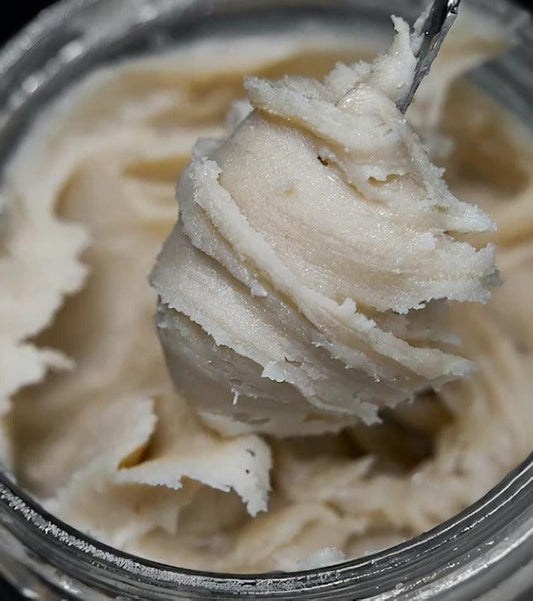
Whipping Rosin: Hand vs Drill – Which Is Better?
Cannabis enthusiasts and connoisseurs have been exploring various techniques to extract the purest and most potent forms of cannabis concentrates. Among the many extraction methods, rosin extraction has gained immense...
Whipping Rosin: Hand vs Drill – Which Is Better?
Cannabis enthusiasts and connoisseurs have been exploring various techniques to extract the purest and most potent forms of cannabis concentrates. Among the many extraction methods, rosin extraction has gained immense...
-
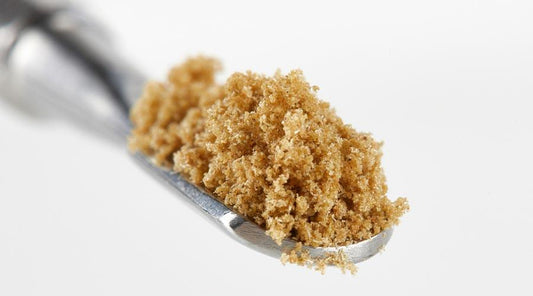
How To Test Starter Material Before Washing Bub...
Pro Tips for Testing Starter Material Prior to Washing Bubble Hash. Bubble hash is a beloved concentrate among cannabis enthusiasts, prized for its purity and potency. One crucial step in...
How To Test Starter Material Before Washing Bub...
Pro Tips for Testing Starter Material Prior to Washing Bubble Hash. Bubble hash is a beloved concentrate among cannabis enthusiasts, prized for its purity and potency. One crucial step in...
-
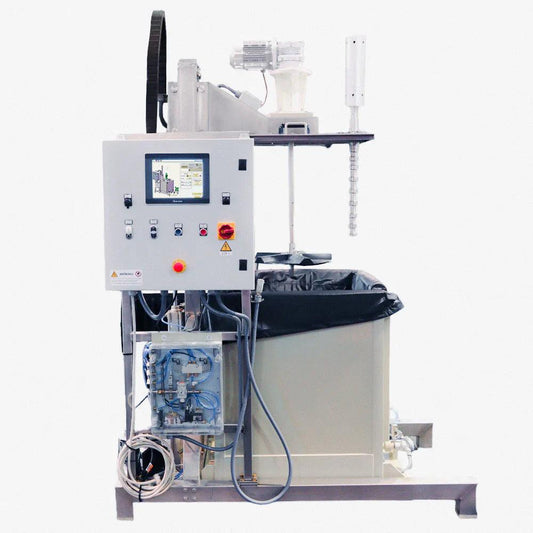
Q&A Solventless Mesclatore Ecosystem
Discover the revolutionary Solventless Mesclatore Ecosystem - a game-changer in hash washing. High capacity, low employee fatigue, and superior yields make it the ideal choice for businesses. Enhance efficiency with...
Q&A Solventless Mesclatore Ecosystem
Discover the revolutionary Solventless Mesclatore Ecosystem - a game-changer in hash washing. High capacity, low employee fatigue, and superior yields make it the ideal choice for businesses. Enhance efficiency with...
